Creating the Ultimate Constituent Experience

Omnichannel fundraising is a buzzword nearly every nonprofit marketer and fundraiser has heard, especially as they explore new ways to reach constituents. After all, today’s donors bring very different expectations to the table. For one thing, they expect more from the brands they support — commercial brands like Amazon and Netflix have trained consumers to expect seamless experiences tailored just for them. Donors also expect personal, relevant, and consistent messages across channels.
This shift in the landscape means nonprofits must adapt to become and remain essential. To deliver the outstanding experiences their donors crave, they must break down the barriers preventing collaboration between their marketing and fundraising teams and create a unified brand experience for their constituents. In short, they must bring their marketing and fundraising teams closer together.
Marketing and fundraising teams have long operated in silos and worked toward different goals. Marketing focused on brand building, awareness, and advertising, while fundraising prioritized building relationships to encourage giving.
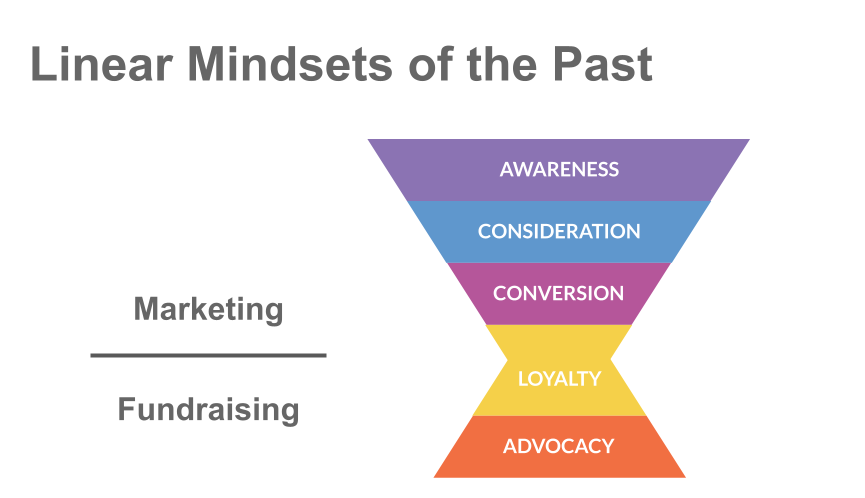
Blurring the lines between marketing and fundraising means overcoming the barriers between the two teams. For instance, the departments likely have very different priorities and key performance indicators (KPIs). One department might control social media and other messaging channels with little input from the other.
Bringing the two teams together can be tricky, so we turned to someone with experience. Liz Nielsen, marketing consultant and former senior vice president at Feeding America, spoke with Allegiance Group + Pursuant Executive Vice President of Client Strategy, Jennifer Bielat, in a recent webinar about how the organization broke down these barriers to advance the donor experience.
Challenges of bringing fundraising and marketing teams together
The ever-changing digital space is one driver forcing marketing and fundraising together. The initial top-of-funnel experience someone has with your organization, combined with the strength of your brand, determines your ability for future fundraising success. The two teams are more dependent on each other than ever before.
Consider how constituents connect with your organization. What once looked like a simple pyramid now looks more like a vortex, which fundraising coach Claire Axelrad so expertly illustrates. The entry points to your organization vary widely and depend on several factors, not least of which is how someone was introduced to your brand and cause. These many entry points add a layer of complexity to the work you do every day — especially if that work is done in separate silos.
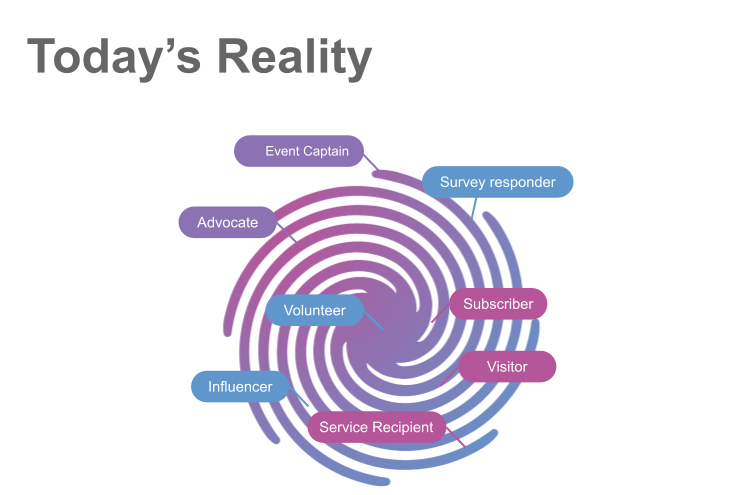
Staffing presents another challenge. Marketing leaders can’t only focus on building brand awareness and improving metrics such as open rates and impressions. They are also asked to be proficient in understanding strategy and execution for moving a constituent down the marketing funnel to the point of donor conversion. Similarly, fundraisers must also have experience utilizing marketing strategies and digital platforms to deliver experiences that ultimately lead to revenue.
Organizational silos are likely your greatest barriers to omnichannel content delivery. Constituents use multiple digital channels daily, so your nonprofit must be there with your message when they’re ready to consume it on their channel of choice. It’s about bringing consistency across touchpoints, which comes from working differently within your organization.
Operating in silos brings several risks:
- You’ll alienate your constituents by confusing them with different experiences across channels.
- You’ll waste resources — investing in two separate departments to deliver an outstanding experience will cost more.
- You’ll weaken your brand by pushing away the people you want to engage with.
Benefits of an omnichannel approach
Adopting an omnichannel fundraising approach brings several benefits to both the constituent and the organization:
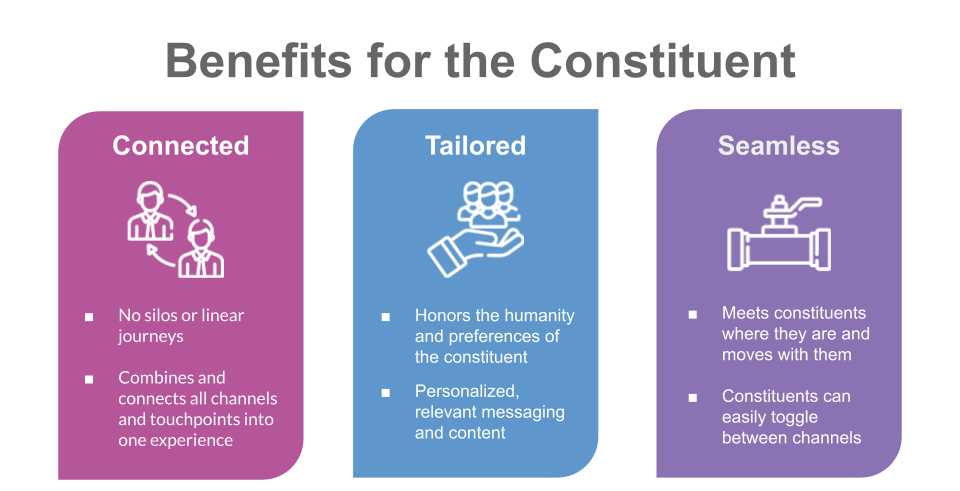
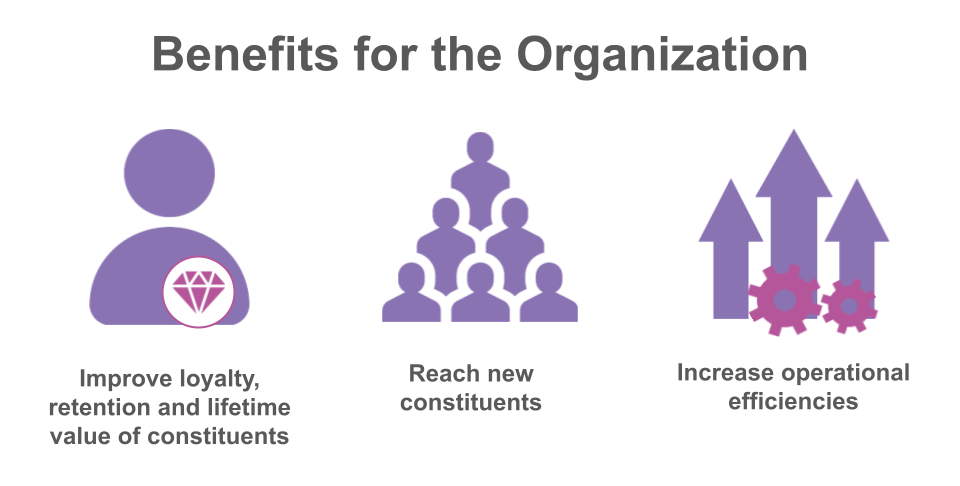
However, before you can reap the rewards, you’ll need to navigate these roadblocks:
- Silos: Reach across the aisle to start breaking down these barriers.
- Leadership Misalignment: Leadership might not understand what you mean when discussing investing in a constituent-centric experience.
- Risk Aversion: Given the economic uncertainty, talking about doing things differently can be scary.
- Competing Priorities and Goals: If the organizational KPIs aren’t aligned, rallying colleagues behind your work won’t be easy.
- Resistance to Change: Some people want to keep doing what they’ve always done.
- Technology Barriers: Good customer relationship management (CRM) software and tools that can automate and support messaging are essential.
- Attribution Reporting: You must know where to place your bets as it relates to your touchpoints and channels.
- Talent Skills and Bandwidth: Know what skills you need to accomplish your goals.
- Investment Resources: Communicate the ROI of this new approach to get the support you need.
At Feeding America, Liz oversaw the organization’s digital presence, including the website, social and email marketing, digital ads, and traditional direct marketing channels like mail, telemarketing, and print inserts. She was the bridge between fundraising and marketing, charged with creating meaningful experiences and retaining the donor base to drive deeper relationships with the organization.
In 2008, as Feeding America was rebranding, the Board of Directors tasked Liz with accelerating digital giving. Clearly, they would need to operate differently and create content designed to attract, engage, and persuade. Feeding America needed upper-funnel channels to understand its audiences more deeply and accelerate lower-funnel metrics like digital revenue. It needed to craft content that met constituents’ needs and created a relationship with them.
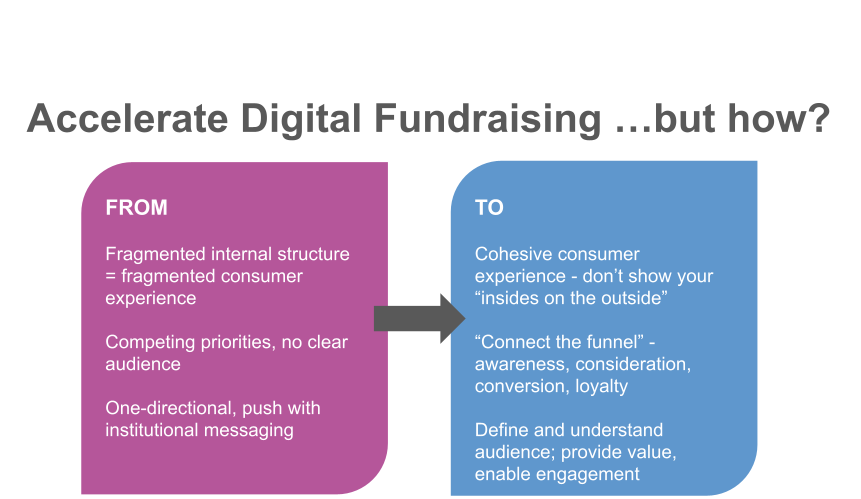
Ultimately, it took a few structural reorganizations to centralize digital responsibilities in a way that provided the best constituent experience. Digital and direct marketing efforts were placed under the Chief Marketing Officer, who oversaw marketing, communications, and operations with the Chief Development Officer. It connected the upper and lower funnel and created a more seamless experience.
Four essential steps to help your omnichannel strategy succeed:
1. Understand Your Audience:
Get to know your constituents by
- Defining your target audience through segmentation study and donor profiles.
- Mining trended data. This is through awareness, intent, brand attributes, and issue resonance for marketing.
- Measuring Fundraising by revenue, retention, frequency, and the average gift.
- Monitoring campaign performance through impressions, reach, traffic, engagement, clicks, and conversions.
- Conducting ad hoc research on motivators and barriers, current attitudes, message testing, and optimization of response form.
2. Assess Your Tech Stack:
For Feeding America, reviewing tech capabilities was a continuous process. Tech platforms like CRMs are the backbone of managing data and creating donor experiences, so be patient and nimble.
3. Connect the Funnel and Prioritize:
With the staff structure and audience insights in place — and by giving ongoing attention to evolving data and tech platforms — Feeding America was able to charge ahead with the work to accelerate digital revenue. They found that an omnichannel approach worked better than digital alone. They developed a cohesive look and consistent message across the website to emails, ads, social media, and direct mail
4. Measure Results.
The organization saw a steady increase in awareness, intent to support, digital revenue, and overall revenue. There were two- to three-point increases in both awareness and intent annually and about 5% revenue growth year over year. Digital revenue grew fastest, at about 15% year over year.
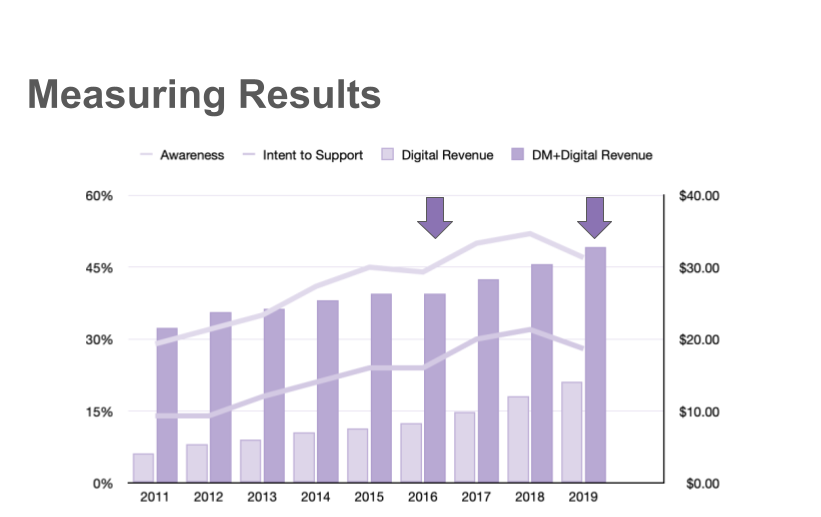
Jennifer and Liz shared eight final tips to help you get started on your omnichannel journey:
- Expand your thinking about prospective audience
- Dig into your data
- Define the problem you’re trying to solve
- Articulate your mission with consistency
- Map existing constituent experiences
- Offer value at every state
- Test and innovate along the way
- Deliver brilliant shareable moments
Watch the Webinar Now
If you’re considering an omnichannel fundraising approach, access this free webinar today. It will be the first step toward enhancing efficiencies within your organization and creating deeper, more meaningful relationships with your donors.